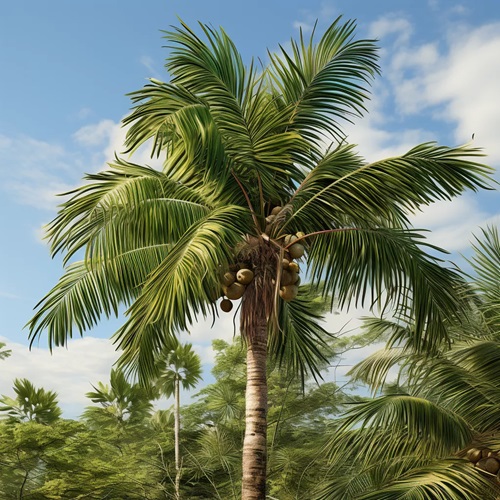Coconut Tree:-

Origin
The botanical name for the coconut is cocos nucifera, with cocos believed to come from Spanish, meaning “monkey-faced” or “eerie-faced” and nucifera from Latin meaning nut-bearing plant (from fero = I bear and nux-nucis = nut). It’s nut, perhaps bearing three germinating pores, resembles a monkey face.The coconut palm, has been eulogised as “Kalpavriksha” (Vriksha means Tree in Malayalam), the all giving tree in the classics of India. Its fruit is called “Lakshmi Phal” which is used in most of the social and religious functions in India from Kashmir to Kanyakumari, irrespective of whether the palm is grown locally or not. The use of coconut throughout India makes it a symbol of national unity and perhaps in the olden times the people of our country or our ancestors might have migrated from a coconut growing area. It is also possible that coconut had been cultivated in many parts of India and the climatic and geographical changes in due course might have caused the confinement of coconut to coastal area.
Features
The coconut palm is a long-lived plant; it has a single trunk, 20-30 metre tall, its bark is smooth and gray, marked by ringed scars left by fallen leaf bases. The tree can live as long as 100 years producing an annual yield of 50 to 100 coconuts. Coconut palms are found throughout the tropics, and can also be successfully grown in areas that receive only mild frosts. 90% of the world’s coconut production for exports, sources from the Asia-Pacific region, though coconut products are an increasing source of revenues for many other developing areas.
The coconut palm is perhaps the widest-grown palm in the world, coconuts feature as one of the main sources of income for producing countries, in that a large number of different products utilized and appreciated in the western countries as well are made out of them.